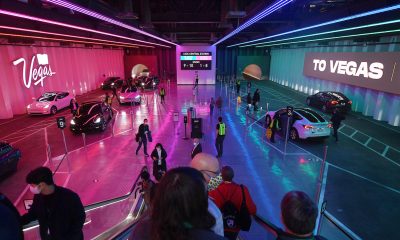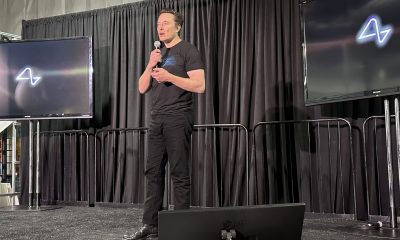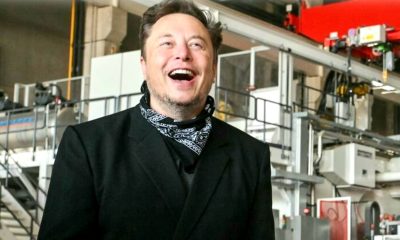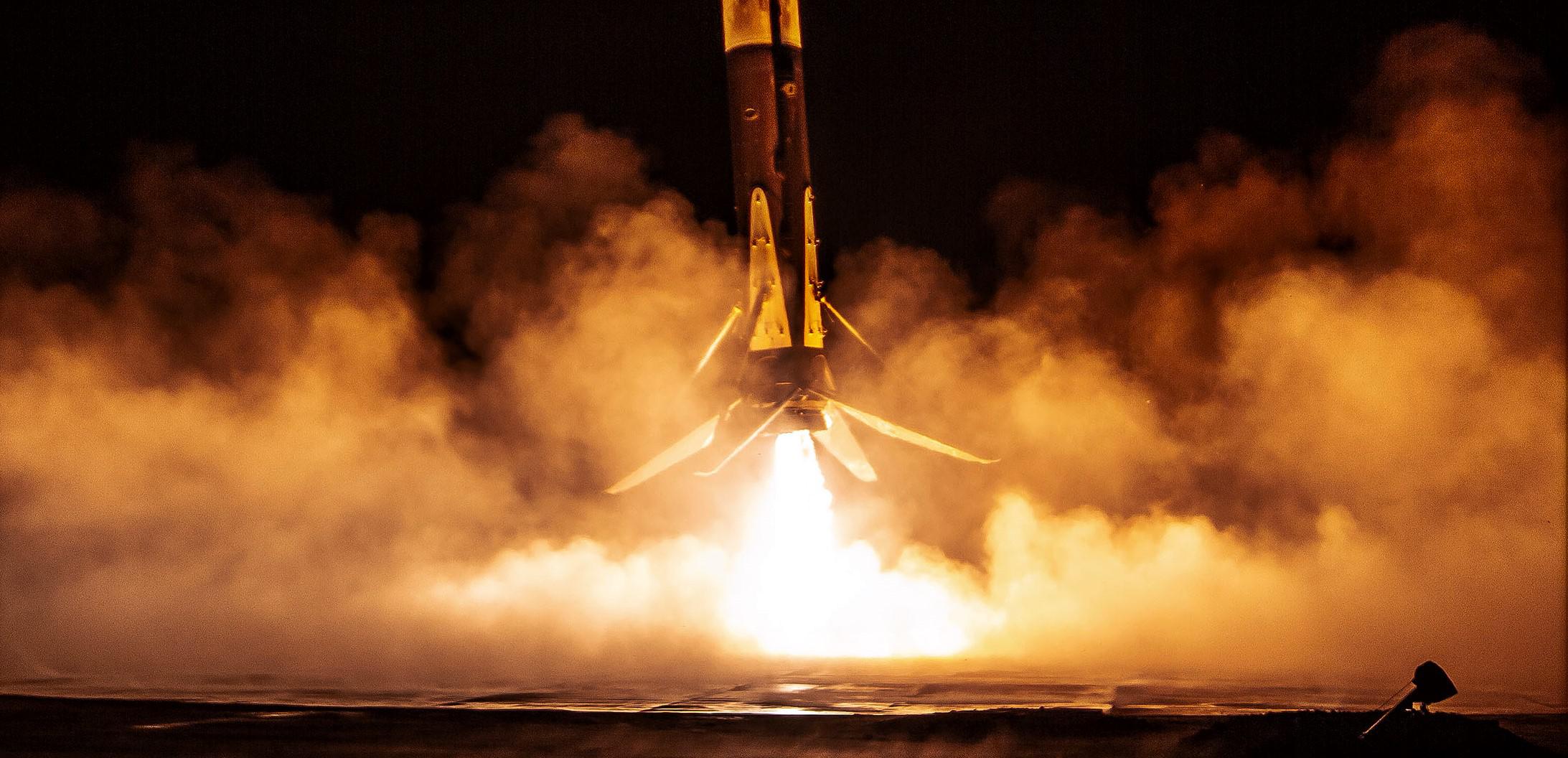
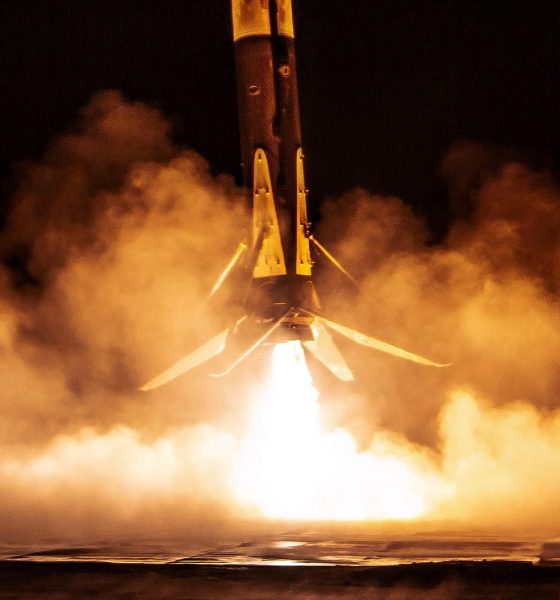
News
SpaceX just expanded the envelope of rocket recovery with 50th booster landing
CEO Elon Musk says SpaceX has successfully expanded the envelope of orbital-class rocket recovery with its 50th booster landing, meaning that all Falcon boosters will have a better chance of safely returning to Earth from now on.
On March 6th, after a four-day delay, a flight-proven SpaceX Falcon 9 rocket, new second stage, and twice-flown Cargo Dragon spacecraft successfully lifted off on the company’s 20th NASA Commercial Resupply Services mission (CRS-20). Dragon capsule C112 and its expendable trunk section are heading up Earth’s orbital hill to rendezvous with the International Space Station (ISS) tomorrow morning, nominally delivering some two metric tons (~4500 lb) of cargo to the ISS and its crew of astronauts. Once the spacecraft returns to Earth, SpaceX’s Dragon 1 program will effectively be over, wrapping up almost a decade of launches with some 45 metric tons (100,000 lb) of cargo delivered to the ISS.
Back on the ground, SpaceX’s Falcon rocket family still has a long life ahead of it and is likely to support one or several hundred more launches between now and its retirement. Additionally, Elon Musk says that the specific Falcon 9 rocket that launched CRS-20 has now proven that SpaceX rocket boosters can successfully land back on Earth even when ground winds are exceptionally high, hopefully guaranteeing many more booster recoveries to come.
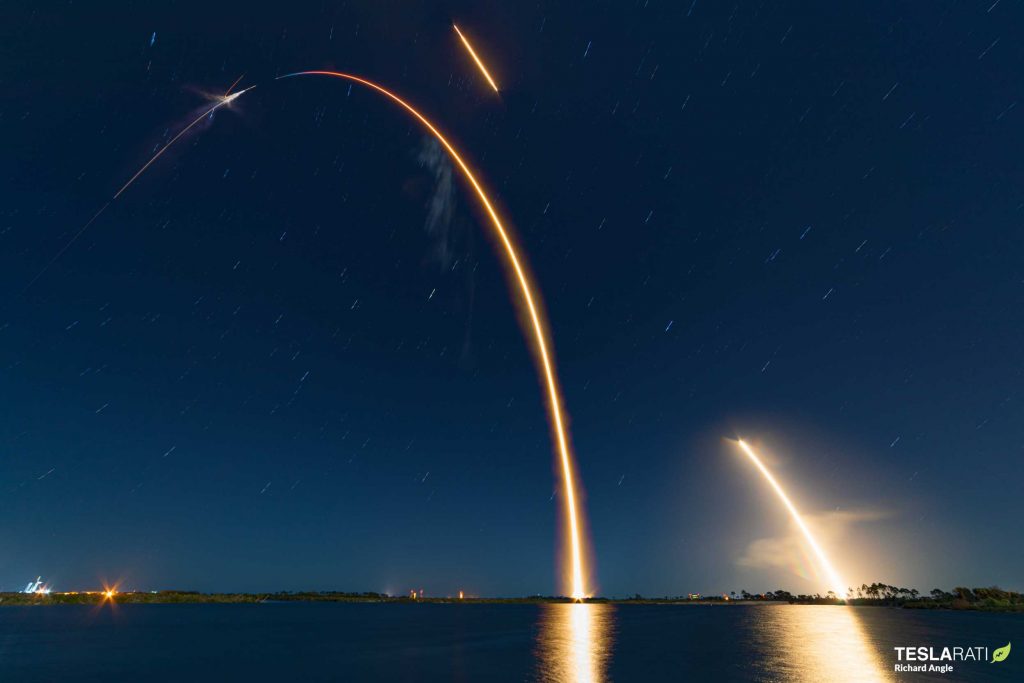
Teslarati photographer Richard Angle was on site to capture the spectacular launch and landing. The exceptionally detailed long-exposure image above includes the entirety of Falcon 9 B1059’s launch and landing, from main engine cut-off (MECO) and boostback burn to the booster’s reentry and landing burns.
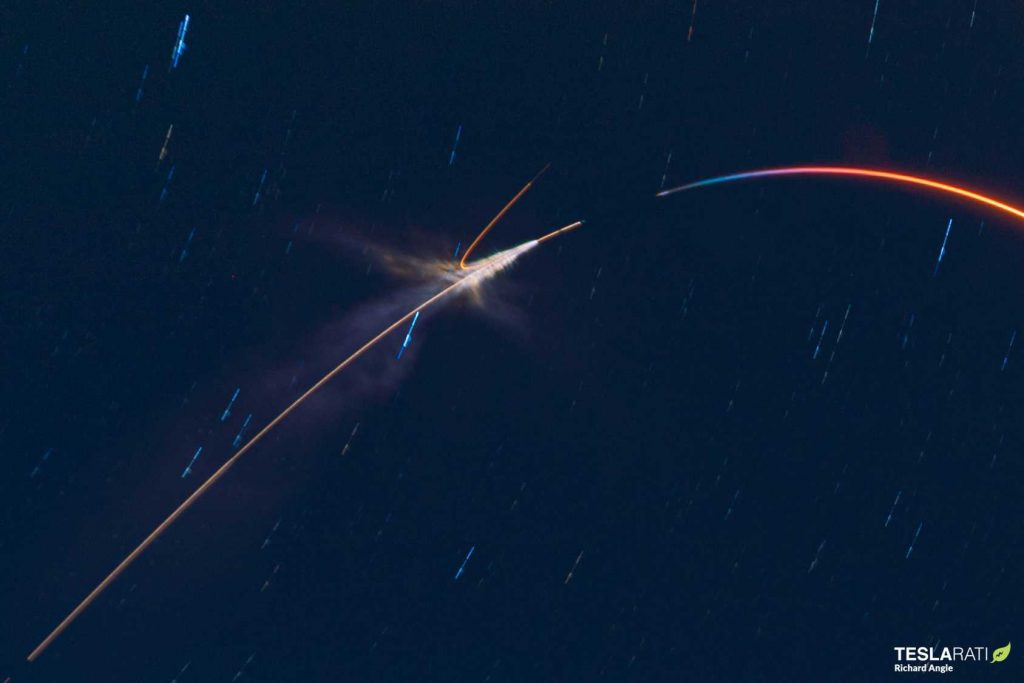
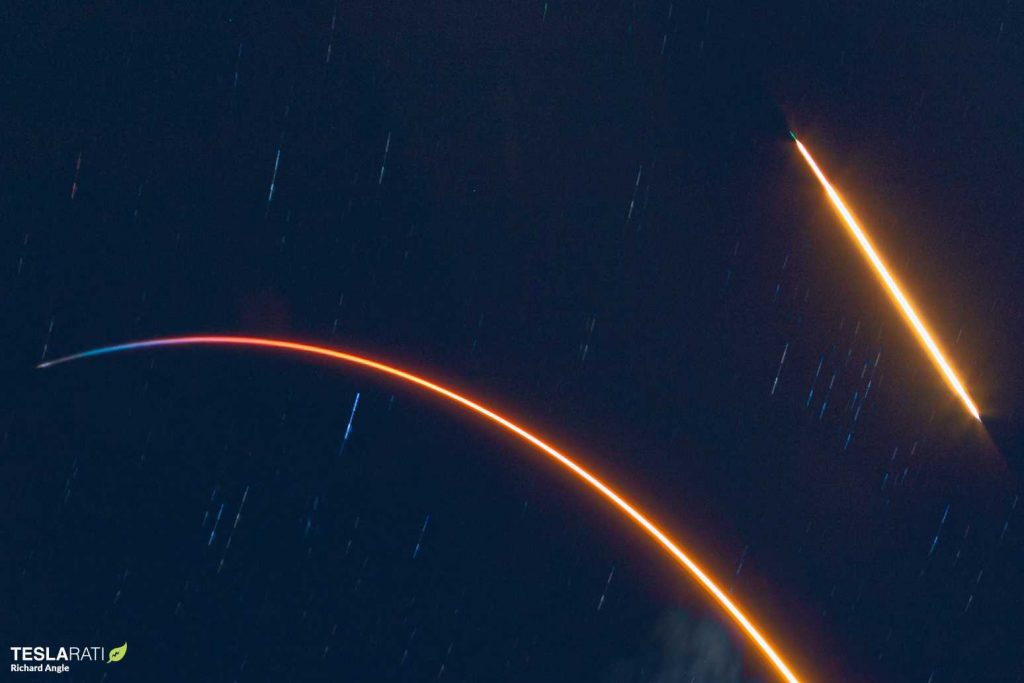
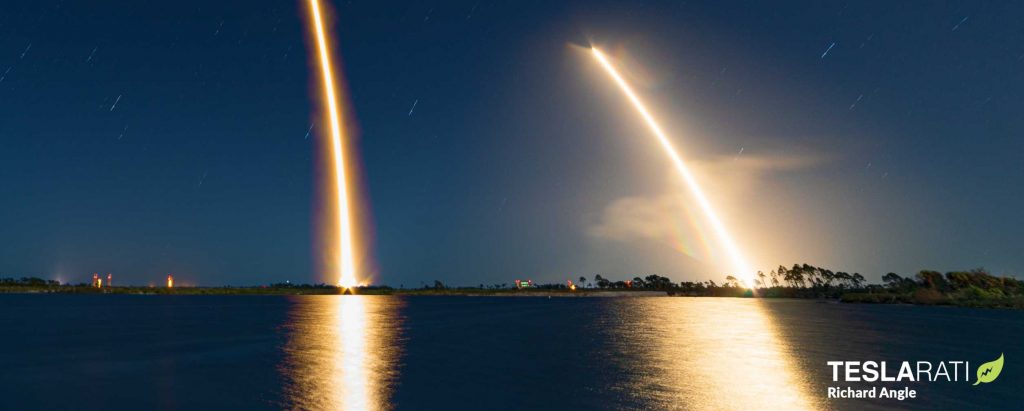
According to Musk, this particular landing was unique because it proved Falcon boosters can be successfully recovered – with a bulls-eye landing, no less – even when winds are high around the landing zone (or drone ship). SpaceX intentionally took this risk in part to expand Falcon 9’s safe envelope of operations, which now includes both winds during liftoffs and winds during landings.
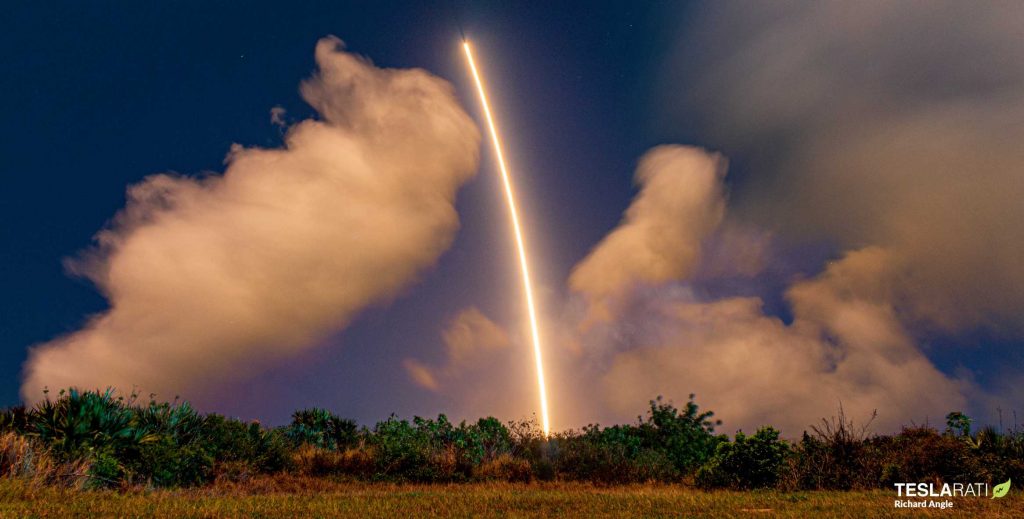
While Cargo Dragon 1 may be on its way to the ISS for the last time, SpaceX won a second ‘Phase 2’ CRS contract from NASA that will see the company begin cargo launches to the space station with its Dragon 2 spacecraft – a lightly modified Crew Dragon – as early as Q4 2020, give or take a month. Prior to that mission, known as CRS-21, Crew Dragon is expected to launch at least once and possibly twice, first carrying two NASA astronauts to the ISS on its Demo-2 test flight and SpaceX’s inaugural crewed launch. There’s also a limited chance that SpaceX will flawlessly complete Demo-2 and be able to prepare a second Crew Dragon for its first operational astronaut launch (deemed ‘Crew-1’) before the end of 2020.
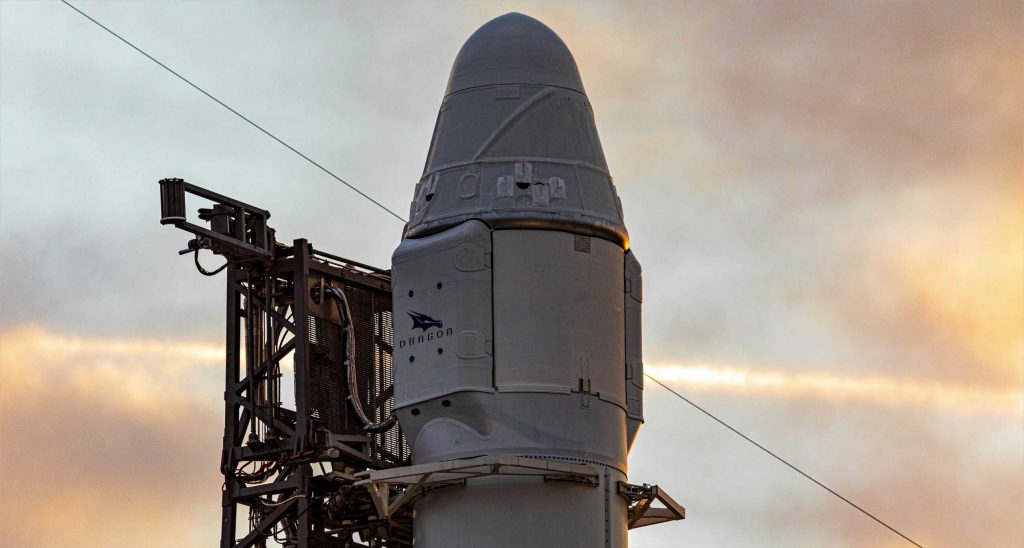
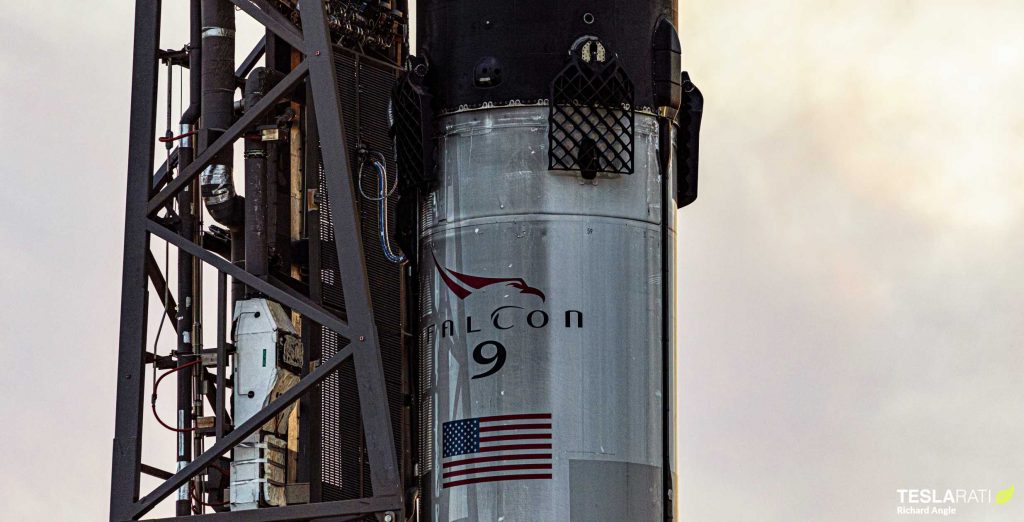
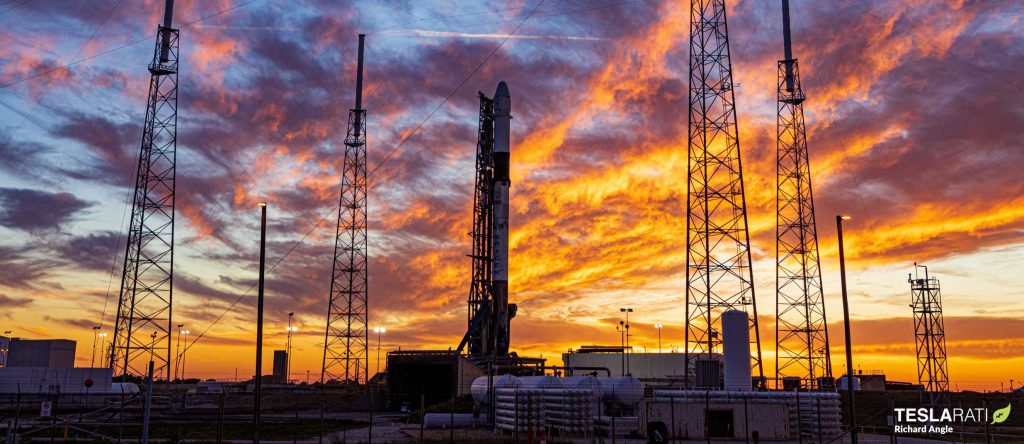
For now, SpaceX’s next Dragon launch will also be the company’s first astronaut launch ever. Crew Dragon’s Demo-2 mission is scheduled to lift off no earlier than late-April or May 2020.
Check out Teslarati’s Marketplace! We offer Tesla accessories, including for the Tesla Cybertruck and Tesla Model 3.
News
Tesla might be doing away with a long-included feature with its vehicles
It appears Tesla is mulling the possibility of not including key cards with its vehicles any longer.
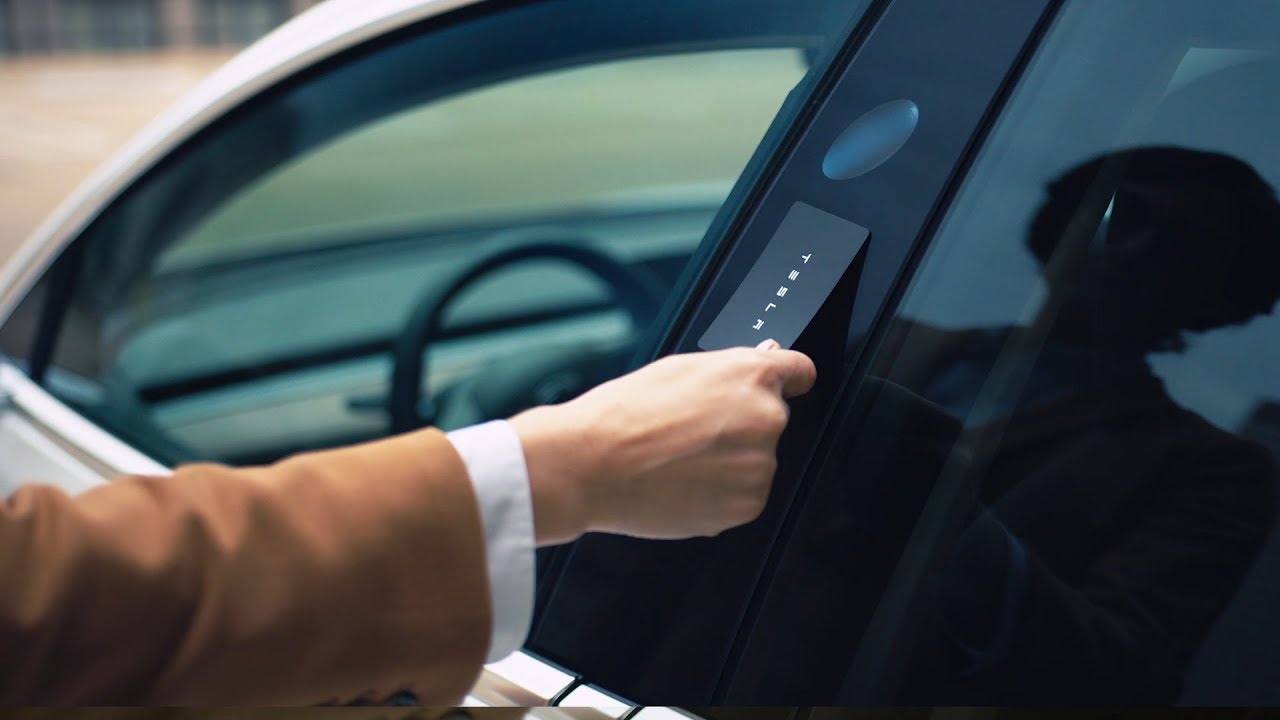
Tesla might be doing away with a long-included feature with its vehicles, as it could be looking to phase out something that very few owners utilize.
Tesla Key Cards are included when you purchase your vehicle, and they assist in the initial setup process. However, after that, they are not super useful or relevant to the owner, as many rely on their Phone Key through the Tesla App to access their cars.
As such, it appears Tesla is mulling the possibility of not including key cards with its vehicles any longer. According to some language that has been removed from vehicle Owner’s Manuals that talks about the inclusion of key cards with the car upon delivery:
“Tesla provides you with two Model 3/Y key cards, designed to fit in your wallet.”
That sentence was removed from Owner’s Manuals, according to Not a Tesla App, which first spotted the change.
Tesla Model 3 owner implants RFID key card chip into her arm as ultimate hack to unlock door
Interestingly, the timing of the phrase being removed from Owner’s Manuals comes just after Tesla launched its “affordable” Standard Models, and could be a small money-saving measure for the company.
Key Cards have been utilized by Tesla for its cars since 2017, as they became an included accessory with the vehicle. They still have their place and are useful for other applications, such as Valet service and even to be used by car owners if their phone is dead or if someone else needs to get into the car.
They can also be purchased in the Tesla Shop for $40.
It seems as if Tesla is planning to have owners be completely reliant on the Phone Key, which is more useful and convenient than carrying around the Key Cards.
Although it is minor, it is yet another strategy Tesla is using to trim any sort of costs that can be eliminated and could save money in the long run.
News
Elon Musk confirms Tesla FSD V14.2 will see widespread rollout
Musk shared the news in a post on social media platform X.
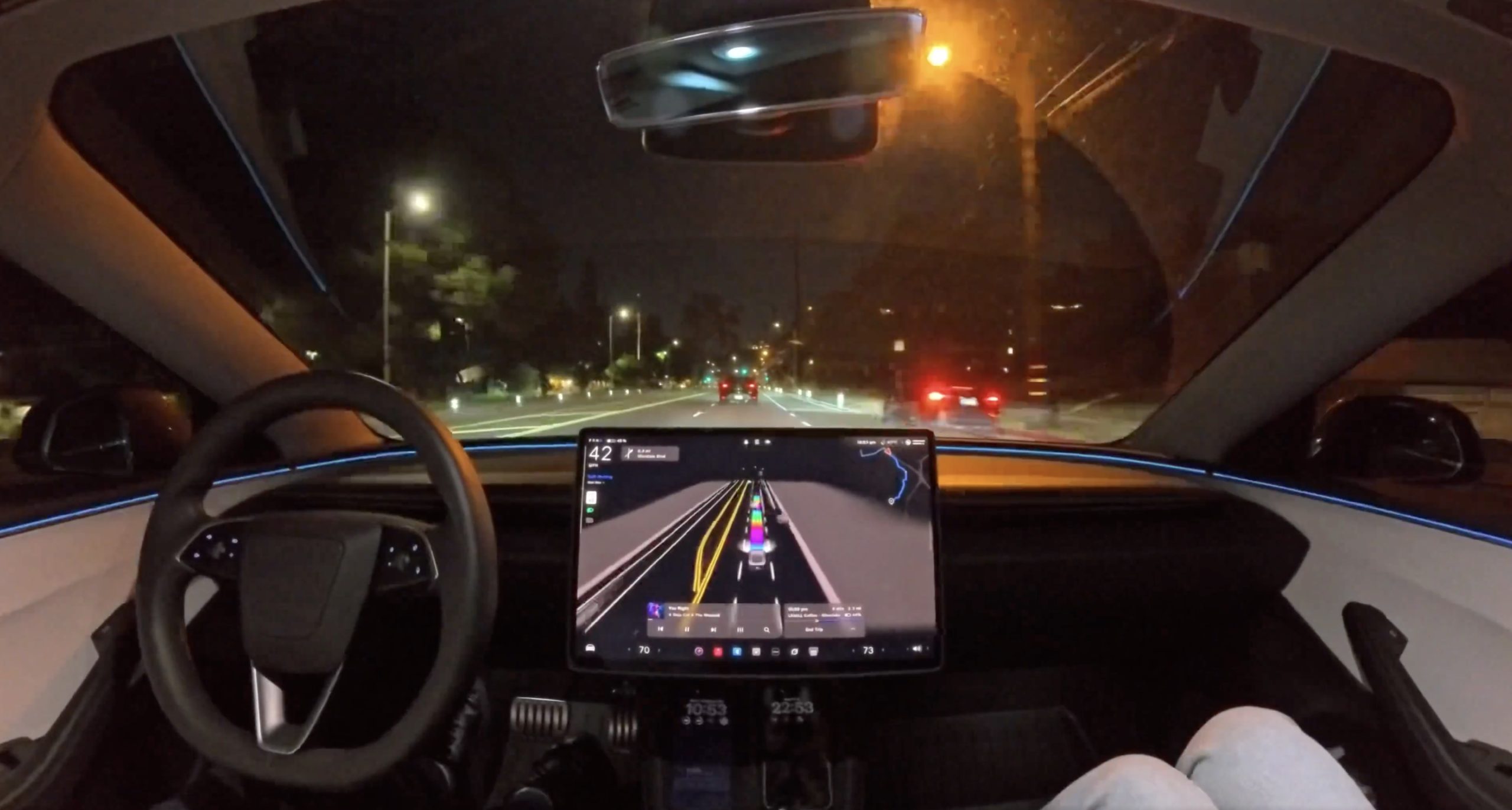
Elon Musk has confirmed that Tesla will be implementing a wide rollout of Full Self-Driving (FSD) V14 with the system’s V14.2 update. Musk shared the news in a post on social media platform X.
FSD V14.1.2 earns strong praise from testers
Musk’s comment came as a response to Tesla owner and longtime FSD tester AI DRIVR, who noted that it might be time to release Full Self-Driving to the fleet because V14.1.2 has already become very refined.
“95% of the indecisive lane changes and braking have been fixed in FSD 14.1.2. I haven’t touched my steering wheel in two days. I think it’s time, Tesla AI,” the longtime FSD tester wrote.
AI DRIVR’s comment received quite a bit of support from fellow Tesla drivers, some of whom noted that the improvements that were implemented in V14.1.2 are substantial. Others also agreed that it’s time for FSD to see a wide release.
In his reply to the FSD tester, CEO Elon Musk noted that FSD V14’s wide release would happen with V14.2. “14.2 for widespread use,” Musk wrote in his reply.
Mad Max mode makes headlines
One of the key features that was introduced with FSD’s current iteration is Mad Max mode, which allows for higher speeds and more frequent lane changes than the previous “Hurry” mode. Videos and social media posts from FSD testers have shown the system deftly handling complex traffic, merging seamlessly, and maintaining an assertive but safe driving behavior with Mad Max mode engaged.
Tesla AI head Ashok Elluswamy recently noted in a post on X that Mad Max mode was built to handle congested daytime traffic, making it extremely useful for drivers who tend to find themselves in heavy roads during their daily commutes. With Musk now hinting that FSD V14.2 will go on wide release, it might only be a matter of time before the larger Tesla fleet gets to experience the notable improvements of FSD’s V14 update.
News
Multiple Tesla Cybercab units spotted at Giga Texas crash test facility
The vehicles were covered, but one could easily recognize the Cybercab’s sleek lines and compact size.
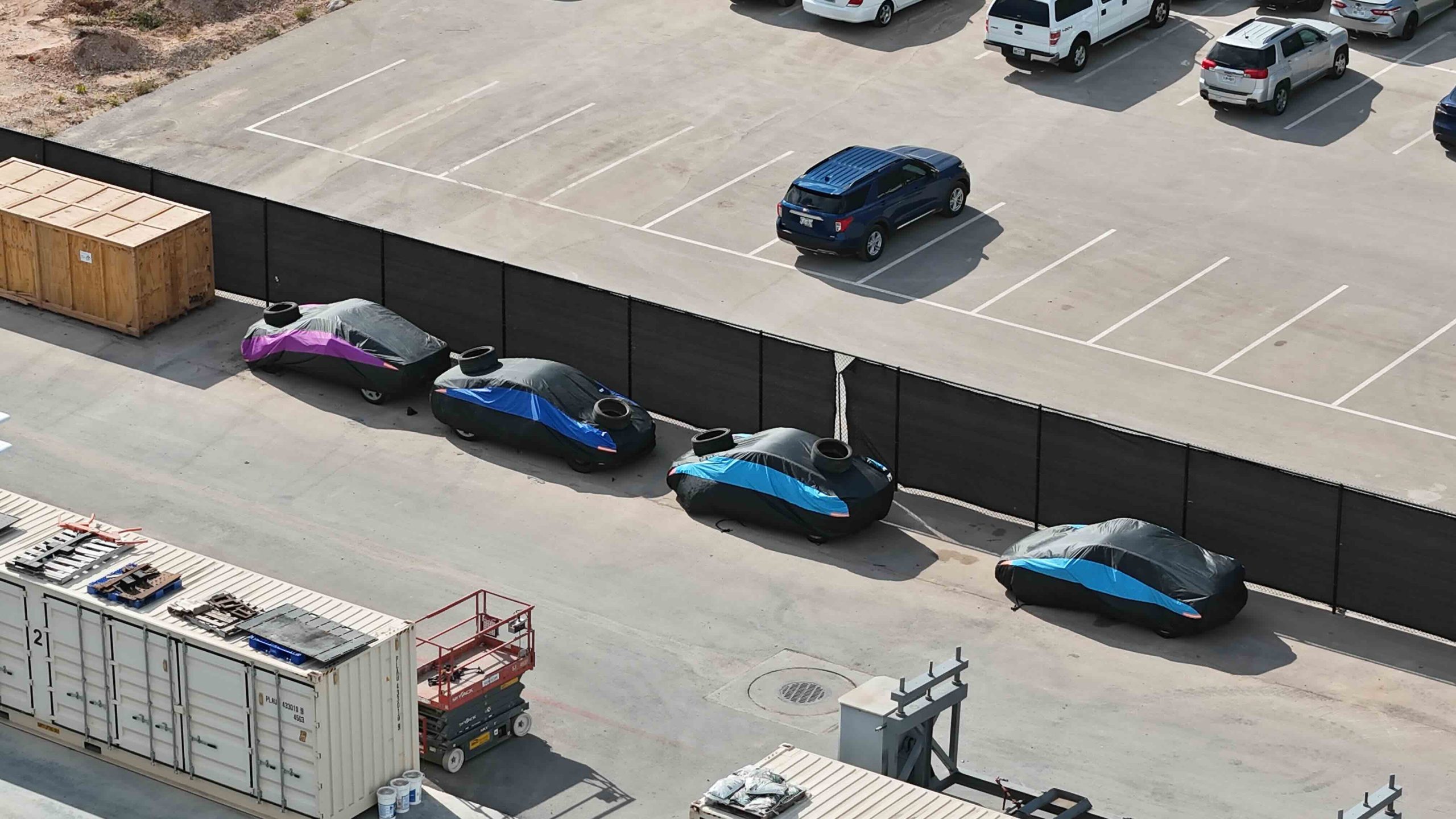
It appears that Tesla is ramping up its activities surrounding the development and likely initial production of the Cybercab at Giga Texas. This was, at least, hinted at in a recent drone flyover of the massive electric vehicle production facility in Austin.
Cybercab sightings fuel speculations
As observed by longtime Giga Texas drone operator Joe Tegtmeyer, Tesla had several covered Cybercab units outside the facility’s crash testing facility at the time of his recent flyover. The vehicles were covered, but one could easily recognize the Cybercab’s sleek lines and compact size. Tegtmeyer also observed during his flyover that production of the Model Y Standard seems to be hitting its pace.
The drone operator noted that the seven covered Cybercabs might be older prototypes being decommissioned or new units awaiting crash tests. Either scenario points to a ramp-up in Cybercab activity at Giga Texas, however. “In either case, this is another datapoint indicating production is getting closer to happening,” Tegtmeyer wrote on X, highlighting that the autonomous two-seaters were quite exciting to see.
Cybercab production targets
This latest sighting follows reports of renewed Cybercab appearances at both the Fremont Factory and Giga Texas. A test unit was recently spotted driving on Giga Texas’ South River Road. Another Cybercab, seen at Tesla’s Fremont Factory, appeared to be manually driven, suggesting that the vehicle’s current prototypes may still be produced with temporary steering controls.
The Tesla Cybercab is designed to be the company’s highest-volume vehicle, with CEO Elon Musk estimating that the autonomous two-seater should see an annual production rate of about 2 million units per year. To accomplish this, Tesla will be building the Cybercab using its “Unboxed” process, which should help the vehicle’s production line achieve outputs that are more akin to consumer electronics production lines.
-

 Elon Musk2 days ago
Elon Musk2 days agoSpaceX posts Starship booster feat that’s so nutty, it doesn’t even look real
-

 Elon Musk1 day ago
Elon Musk1 day agoTesla Full Self-Driving gets an offer to be insured for ‘almost free’
-

 News1 day ago
News1 day agoElon Musk confirms Tesla FSD V14.2 will see widespread rollout
-

 News2 days ago
News2 days agoTesla is adding an interesting feature to its centerscreen in a coming update
-

 News4 days ago
News4 days agoTesla launches new interior option for Model Y
-

 News3 days ago
News3 days agoTesla widens rollout of new Full Self-Driving suite to more owners
-

 Elon Musk2 days ago
Elon Musk2 days agoTesla CEO Elon Musk’s $1 trillion pay package hits first adversity from proxy firm
-
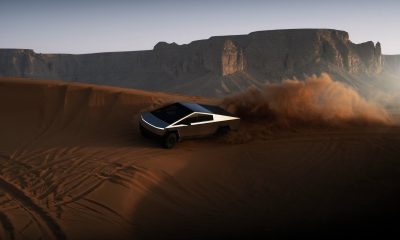
 News4 days ago
News4 days agoTesla makes big move with its Insurance program


